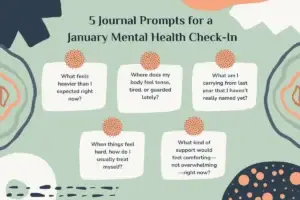In today’s fast-paced world, the prevalence of trauma and its impact on mental health has become increasingly evident. Addressing trauma requires a delicate balance of therapeutic techniques, and one approach gaining traction is the integration of mindfulness practices into therapy sessions. In our exploration of “Using Mindfulness Techniques in Trauma Therapy Sessions,” we delve into the powerful synergy between mindfulness and trauma therapy. By fostering present-moment awareness and non-judgmental acceptance, mindfulness equips individuals with invaluable tools to navigate the complexities of trauma recovery. In this introductory blog post, we’ll uncover the principles behind mindfulness, examine its practical applications within trauma therapy, and highlight its transformative potential in promoting healing and resilience. Join us on this journey as we uncover the profound impact of mindfulness techniques in cultivating a path towards healing and wholeness in the aftermath of trauma.
From Surviving to Thriving: Harnessing Mindfulness in Trauma Recovery
Trauma leaves an indelible mark on the human spirit, often leaving survivors feeling trapped in a cycle of survival mode. However, amidst the darkness, there exists a beacon of hope: mindfulness. By harnessing the power of mindfulness in trauma recovery, survivors can transcend mere survival and embark on a journey towards thriving. In this guide, we explore eight transformative mindfulness practices tailored specifically for trauma recovery, offering a roadmap towards reclaiming agency, resilience, and inner peace.
Mindful Breathing
At the core of mindfulness lies the simple yet profound practice of mindful breathing. In trauma recovery, the breath serves as an anchor to the present moment, offering a sanctuary amidst the storm of overwhelming emotions. Practice mindful breathing by gently bringing awareness to each inhale and exhale, observing the natural rhythm without judgment or alteration. Notice the sensation of the breath moving in and out of the body, grounding yourself in the present moment. Through mindful breathing, survivors can cultivate a sense of calm and stability, laying the foundation for deeper healing.
Body Awareness
Trauma often manifests in the body, leaving survivors disconnected from their physical selves. Body awareness practices invite survivors to reconnect with their bodies in a gentle and compassionate way. Take time to tune into physical sensations, noticing areas of tension, discomfort, or numbness without judgment. Practice gentle movement or body scan meditation to explore the sensations present in each part of the body. By cultivating body awareness, survivors can foster a sense of presence and embodiment, reclaiming ownership of their physical experience.
Grounding Techniques
During moments of distress, grounding techniques serve as lifelines, anchoring survivors in the present moment and providing a sense of safety. Explore grounding techniques such as the 5-4-3-2-1 method, where you name five things you can see, four things you can touch, three things you can hear, two things you can smell, and one thing you can taste. Alternatively, engage in rhythmic activities such as tapping your fingers or stomping your feet to bring attention back to the here and now. By grounding themselves in the present moment, survivors can alleviate the grip of traumatic memories and regain a sense of control.
Loving-Kindness Meditation
In the aftermath of trauma, survivors often grapple with feelings of self-blame, shame, and unworthiness. Loving-kindness meditation offers a powerful antidote by cultivating compassion towards oneself and others. Begin by offering loving-kindness towards yourself, repeating phrases such as “May I be safe, may I be happy, may I be at ease.” Gradually extend these wishes to loved ones, acquaintances, and even those who have caused harm. By nurturing a mindset of kindness and compassion, survivors can begin to heal emotional wounds and cultivate a sense of interconnectedness with others.
Cultivating Resilience
Mindfulness empowers survivors to cultivate resilience in the face of adversity, transforming their relationship with pain and suffering. Explore resilience-building practices such as RAIN (Recognize, Allow, Investigate, Nurture), where you acknowledge difficult emotions with kindness and curiosity. Embrace the truth that resilience is not about avoiding pain, but rather about embracing it with courage and compassion. By cultivating resilience, survivors can navigate the ups and downs of the healing journey with grace and determination.
Practical Mindfulness Techniques for Trauma Therapy
In the realm of trauma therapy, incorporating mindfulness techniques can be a powerful tool for healing. Mindfulness, the practice of being present in the moment without judgment, offers individuals the opportunity to observe their thoughts, feelings, and bodily sensations with acceptance and compassion. For trauma survivors, who often struggle with intrusive memories, hypervigilance, and overwhelming emotions, mindfulness can provide a sense of grounding and stability. In this article, we will explore eight practical mindfulness techniques that therapists can use in trauma therapy sessions to support clients on their journey towards healing and recovery.
Grounding Techniques
Grounding techniques help trauma survivors connect with the present moment and feel more anchored in reality. One simple grounding exercise involves using the five senses. Encourage clients to name five things they can see, four things they can touch, three things they can hear, two things they can smell, and one thing they can taste. This exercise helps bring attention to the immediate environment, providing a sense of safety and stability.
Deep Breathing Exercises
Deep breathing exercises are an effective way to calm the nervous system and reduce feelings of anxiety and distress. Teach clients the 4-7-8 breathing technique: inhale for a count of four, hold the breath for a count of seven, and exhale slowly for a count of eight. Repeat this cycle several times, encouraging clients to focus on the sensation of the breath moving in and out of their bodies.
Body Scan Meditation
Body scan meditation involves systematically bringing attention to different parts of the body, noticing any sensations without judgment. Begin by guiding clients to focus on their feet and gradually move upward, scanning each part of the body for tension or discomfort. This practice promotes relaxation and body awareness, helping clients release stored tension and stress.
Progressive Muscle Relaxation (PMR)
PMR is a relaxation technique that involves tensing and then relaxing different muscle groups in the body. Start by instructing clients to tense a specific muscle group, such as the hands or shoulders, for a few seconds, and then release the tension completely. Move through each muscle group, working from the feet up to the head. PMR helps clients become more attuned to bodily sensations and can reduce overall muscle tension and stress.
Guided Imagery
Guided imagery involves using the imagination to create calming and soothing mental images. Guide clients through a visualization exercise where they imagine themselves in a safe and peaceful place, such as a beach or forest. Encourage them to engage all their senses, noticing the sights, sounds, smells, and sensations of this imagined environment. Guided imagery can evoke feelings of relaxation and provide a respite from distressing thoughts and memories.
Mindfulness for Resilience After Trauma
In the aftermath of trauma, rebuilding resilience is crucial for healing and moving forward. Mindfulness emerges as a powerful tool in this journey, offering a pathway to strengthen one’s inner resilience. Let’s explore how mindfulness practices can empower individuals to navigate the challenges of trauma with greater ease and resilience.
- Cultivating Present-Moment Awareness: Mindfulness encourages individuals to anchor themselves in the present moment, fostering a sense of stability and control amidst the chaos of trauma’s aftermath.
- Managing Emotions with Equanimity: By learning to observe their thoughts and feelings without judgment, individuals can develop emotional resilience, allowing them to respond to triggers and stressors with greater calmness and clarity.
- Building Self-Compassion: Mindfulness practices promote self-compassion by encouraging individuals to treat themselves with kindness and understanding, counteracting the self-blame and shame often associated with trauma.
- Enhancing Adaptive Coping Strategies: Through mindfulness, individuals can develop adaptive coping strategies, such as deep breathing and grounding techniques, to manage distressing symptoms and regulate their nervous systems effectively.
Conclusion
Integrating mindfulness techniques into trauma therapy sessions can be profoundly beneficial for individuals on their journey towards healing. By cultivating present moment awareness and fostering a compassionate attitude towards oneself, clients can develop invaluable coping mechanisms to navigate the complexities of trauma. Mindfulness offers a powerful tool to regulate emotions, reduce anxiety, and enhance overall well-being, paving the way for profound transformation and renewal.
If you’re ready to embark on a path of healing and renewal, Renewed Wellness Counseling, PLLC is here to support you. Located in North Carolina, our dedicated team of therapists specializes in trauma therapy and incorporates mindfulness techniques into our practice to help you reclaim your sense of peace and resilience. Contact us at 252-505-8150 to schedule a consultation and take the first step towards a renewed sense of well-being.








